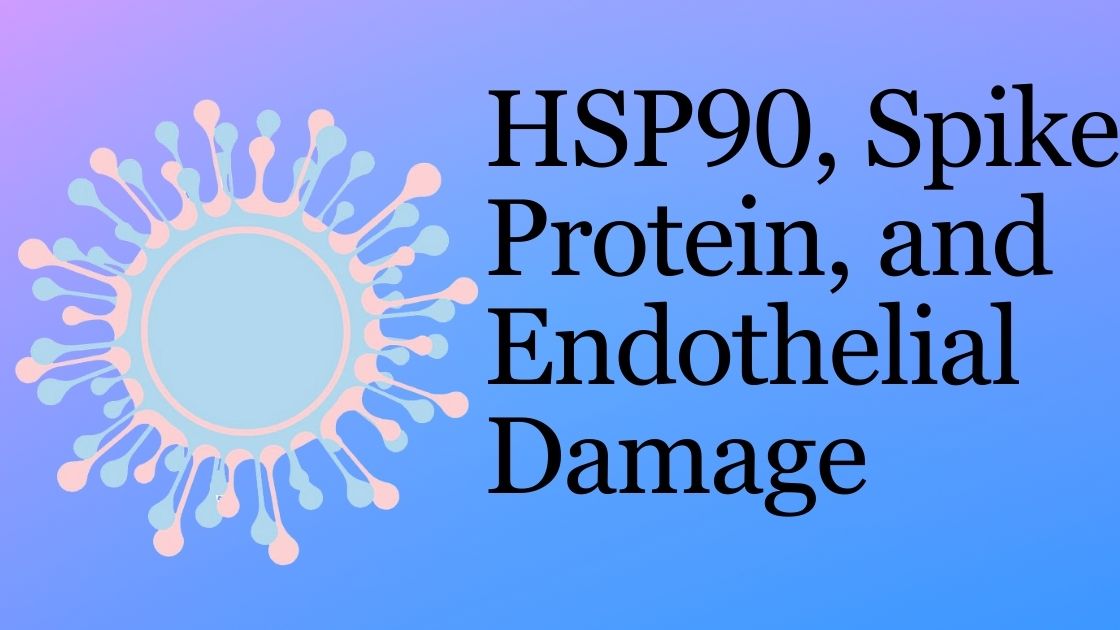A 2022 research paper published in Frontiers in Physiology explains the interaction between the spike protein and the endothelium — and a possible solution.
What is the endothelium?
The endothelium is a single layer of cells that forms the lining of the blood vessels. However, it is more than just a casing that maintains blood in the vessels.
The endothelium forms a permeable barrier that controls the exchange of molecules between the blood and surrounding tissue. Oxygen, nutrients, and waste products all need to move in and out of the blood vessels — all controlled by the endothelium.
Important to the long spike story, though, is that the endothelium also produces and releases a variety of signaling molecules, such as nitric oxide, which help regulate vascular tone, blood pressure, and blood clotting. The endothelium also plays a key role in inflammation. It can secrete cytokines and other inflammatory mediators that recruit immune cells to the site of injury or infection.
How does the spike protein interact with the endothelium?
The spike protein has two subunits, S1 and S2. There is a cleavage site at which host enzymes cut the spike protein into the two subunits. The S2 subunit binds to the ACE2 receptor (and a couple of other receptors), allowing the virus to enter the host cell. [ref]
The S1 subunit is then released into the blood vessel or extracellular area.
As early as mid-2020, research was published explaining that the spike protein promotes loss of barrier function. The blood-brain barrier was affected, as well as endothelial cells in blood vessels in the brain.[ref] Kidney endothelial cells are also damaged by the spike protein.[ref] Other research showed that the lung vascular permeability was also impacted by the spike protein alone, in this case, just exposure to the S1 protein. [ref] In the heart, the spike protein alone was shown to cause endothelial cell death.[ref]
Side note: Research showing that the spike protein alone caused endothelial dysfunction in the brain, kidneys, and vascular system was published in multiple preprints and peer-reviewed journals by mid-2020.
So what can be done?
Heat shock proteins: what are they?
Heat shock proteins are a family of proteins that act as ‘chaperones’. They help other proteins to assume their stable forms by folding into the correct formation. Heat shock proteins are activated by stressors. These stressors include high heat (thus the name), as well as long-term cold, starvation, oxidative stress, and infections (viral or bacterial). [ref][ref][ref]
There are multiple heat shock proteins, with the most common being Hsp90.
Hsp90 is found in most cell types and accounts for approximately 1-2% of the total cellular proteins in the body. When cells are put under stress, though, the amount of Hsp90 can rise to 4-6% of the cellular protein content.[ref]
In the endothelium, HSP90 is thought to be involved in regulating the activity of a variety of signaling pathways that control vascular tone, blood flow, and inflammation. For example, HSP90 interacts with and regulates the activity of the endothelial nitric oxide synthase (eNOS) enzyme, which is responsible for producing nitric oxide, a potent vasodilator.
In the context of an infection, Hsp90 is involved in “stabilizing pathways leading to inflammation”.[ref] In other words, Hsp90 helps inflammatory pathways to increase inflammation, which is needed at the right level. Excessive inflammation causes cell death, leading to long-term dysfunction or even death.
Learn more about genetic variants that impact your production of HSP90 here.
Inhibiting HSP90
If Hsp90 is involved in exacerbating the damage caused by exposure to the spike protein, then perhaps inhibiting Hsp90 can reduce the impact of the spike protein.
Researchers discovered that Hsp90 inhibitors could prevent damage from the S1 subunit of the spike protein if administered before exposure. Moreover, post-treatment with Hsp90 inhibitors could help to repair the S1 spike damage to the endothelial barrier.[ref]
The research chemicals used in this study to inhibit Hsp90 are not readily available or necessarily safe for humans.
There are a couple of natural options that can be used.
EGCG, a component of green tea, is a natural Hsp90 inhibitor.[ref]
Other natural inhibitors of Hsp90 include Gedunin and Celastrol, which are related compounds from the Indian neem tree and other plant species, such as the root of the Thunder god vine.[ref]
Curcumin and quercetin, readily available natural supplements, have also been shown to inhibit HSP90 activity.[ref][ref][ref]
References:
Colunga Biancatelli, Ruben Manuel Luciano, et al. “HSP90 Inhibitors Modulate SARS-CoV-2 Spike Protein Subunit 1-Induced Human Pulmonary Microvascular Endothelial Activation and Barrier Dysfunction.” Frontiers in Physiology, vol. 13, 2022. Frontiers, https://www.frontiersin.org/articles/10.3389/fphys.2022.812199.
Prodromou, Chrisostomos. “Mechanisms of Hsp90 Regulation.” Biochemical Journal, vol. 473, no. 16, Aug. 2016, pp. 2439–52. PubMed Central, https://doi.org/10.1042/BCJ20160005.
Amraei, Razie, and Nader Rahimi. “COVID-19, Renin-Angiotensin System and Endothelial Dysfunction.” Cells, vol. 9, no. 7, July 2020, p. 1652. PubMed, https://doi.org/10.3390/cells9071652.
Bohush, Anastasiia, et al. “Hsp90 and Its Co-Chaperones in Neurodegenerative Diseases.” International Journal of Molecular Sciences, vol. 20, no. 20, Oct. 2019, p. 4976. PubMed Central, https://doi.org/10.3390/ijms20204976.
